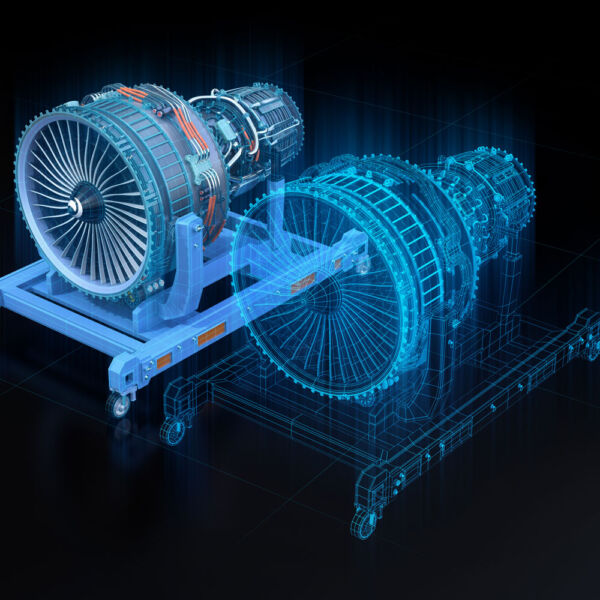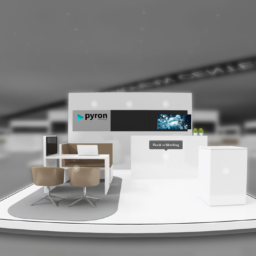What exactly is a digital twin?
When you think of digital twins, you may be picturing a new product, a cool technology or even a business model. But there are also many other scenarios where digital twins are used as a way to measure and improve the performance of an existing product.
A digital twin is a virtual representation that serves as the real-time digital counterpart of a physical object or process. The virtual twin is disrupting the entire product lifecycle management (PLM), from design to manufacturing to service and operations. The logic behind this is that any time there is a link between physical objects and processes, the potential for performance improvement exists.
See how this works:
- If you have an object modelling software like AutoCAD which has thousands of possible geometric shapes in it, then there’s going to be at least one shape in your environment that you can use for comparison.
- If two objects have very similar shapes, and if you are performing a comparison based on those two objects then it makes sense that your real-world object would too…
- If your real-world object has similar attributes or behaviours then it makes sense that your virtual world object would too…
- And eventually upon further comparison, if those two objects are from different parts of their life cycle (design/manufacturing/service/operations), then it makes sense that the final physical object should be very different from the virtual one…
- It’s not just about how similar they are, but how similar they are with respect to what they do. That’s what keeps them apart from other products in the marketplace.
Digital Twin: Concept and Definitions
What’s the difference between a physical object and a digital object? It’s a question that many companies are asking themselves.
According to the World Economic Forum’s (WEF) 2018 Digital Bystander survey, only 0.4% of respondents in the world work in “tech” or “digital” jobs. On the other hand, 1.7% of people in developed countries hold jobs in industries like retail and manufacturing which include product development, design, marketing and distribution.
The digital twin is an ideal representation of a physical object or process that gives everyone involved with it an instant glimpse into its inner workings but without having to physically touch the object.
We are used to seeing real-life objects through windows or mirrors, but digital twins provide a window into an object’s interior without having to look directly at it.
A digital twin can be a 3D rendering of an object stored on your computer desktop or smartphone, as well as an online version on social media platforms such as Facebook, Instagram and Twitter. The digital twin is also often referred to as virtual reality (VR), augmented reality (AR) or virtual reality headset technology.
Digital Twin: History and Future
There are two aspects of the digital twin concept:
- the digital twin is a virtual existence;
- it is a representation of an object or process.
The good news is that this conceptual approach offers the potential to improve customer satisfaction, product development and quality. This does not imply that all problems can be solved by having a “perfect product” for customers to purchase. Rather, a genuine solution to customer problems may require an understanding of how products work from the customer’s perspective, in addition to how products work from the manufacturer’s perspective.
The second half of this article describes how this approach can be applied to product lifecycle management (PLM), from design and manufacturing processes through service and operations.

Benefits of Digital Twins
The digital twin is the reality of a digital product. By definition, it is a virtual representation of an object, process or event that is useful as an alternative to physical representation. Digital twins are uniquely suited to web-based and mobile applications, where the physical object can be easily removed and mover around; while creating a digital counterpart for the real thing.
Digital twins are also used in other application areas such as:
- Product design.
- Scheduling functions (e.g., customer service).
- Business processes (e.g., customer relationship management).
- Supply chain management (e.g., inventory control).
- Service provisioning (e.g., inventory control)
- Medical devices management
A physical twin allows for the implementation of many of these functions within a single product or service model, eliminating real-world implementation issues (e.g., material handling and transportation) that can arise when using an electronic twin. The benefits include being able to take advantage of numerous existing processes using existing IT infrastructure; often reducing costs associated with implementing new processes that may or may not be included within current IT systems; and allowing products to be localized to local markets while still incorporating global capabilities and access to international markets through partner relationships with manufacturers from around the world.
The use of digital twins has been demonstrated in many industries including:
- Financial services (e.g., insurance products)
- Retail/retail operations
- Healthcare/medical equipment
- Transportation/transport equipment
- Automotive vehicles/vehicle components
In addition to their use in manufacturing, digital twins have been successfully deployed in healthcare contexts, particularly concerning electronic medical records applications, enabling providers and patients much more rapid access to health information stored on the Internet or remotely available through mobile phones without requiring expensive onsite hardware installation and maintenance costs associated with traditional paper-based record systems with due care being taken not to disclose sensitive information such as patient health information without specific authorization from institutional policy or legal authorities. Digital twins can also provide enterprises with cost benefits by reducing machine downtime, decreasing inventory holding costs, improving efficiency, increasing quality, empowering customers, saving space, improving productivity, saving energy, improving process automation, expanding market reach by providing more value for customers at lower costs than traditional solutions such as paper-based records which consume up to 80% of all energy produced during their production cycle; lowering purchase price tags by enabling smaller organizations dealing primarily with small volume.
Challenges of Digital Twins
Digital twins are a key component in the digital transformation of the manufacturing, service, and operations industries.
Digital twins are designed to make it possible for manufacturing companies to create and supply identical parts or assemblies to customers. Digital twins serve as a single source of truth across all phases of product design and manufacturing, allowing customers to take advantage of the flexibility of multiple production processes.
Digital twins provide an accurate representation of physical products. They enable manufacturers to improve processes, reduce costs, and deliver accurate end-to-end lifecycle management solutions through a single platform. “Digital twin” is a term used in the field of product lifecycle management (PLM) that refers to virtual representations that serve as the real-time digital counterpart of a physical product or process. The term often is applied specifically to internal systems that serve as the virtual representation for internal products or processes in an enterprise’s internal working environment (IW environment).
Examples of Digital Twins
Let’s start with the obvious here. Digital twins are the digital representation of physical objects or processes in a real-time environment. Aside from their usefulness as a tool for product life cycle management, digital twins do more than simply represent a physical product. They can also be used to:
- Design new products and provide rapid feedback to stakeholders that verify product features
- Provide rapid design iterations, enabling faster customer feedback cycles
- Enable faster customer decision-making cycles and improve customer service responsiveness
- Implement and test new manufacturing technologies and processes under real-world conditions
- Provide quick access to information that was previously unavailable through internal systems and servers.
Conclusion
When you design a product, what do you do? You create a physical dummy. It’s the product’s representation in digital form. You don’t need to physically create the digital copy of your product, but the digital copy is just as important for performance as a physical copy is for consumption.
Don’t think of your product as an object. Think of it as a process. It needs to be designed and manufactured in order to be produced and traded in real-time.
If it’s not designed correctly, it will fail if it is sold at retail or installed on production lines. If it isn’t manufactured correctly, it will fail if it is installed on production lines or if delivered to customers that are not yet ready for production or installation. The same concept applies when you design and manufacture products that go into production:
- You need to design them so they can be made easily and quickly so they can be produced with high quality at low cost;
- You need to manufacture them cheaply so they can be installed easily and quickly so they can be installed with high quality at low cost;
- You need to install them on production lines so they can be made easily and quickly so they can be completed with high quality at low cost;
- You need to inspect them before shipping them to customers if you want them to perform well;
And finally, you need to monitor their performance during shipping and installation because failure mode of delivery can occur at any stage in the process — from manufacturing through installation, shipping, or even after the installation has been completed:
What are the circumstances that could cause failure? Remember that what happens in one phase doesn’t necessarily happen in another phase — even though the physical copy might have been made or manufactured exactly the same way. For example, some types of products might require mining equipment which might not exist on demand anywhere on earth; other types of products might require tools that aren’t available locally but may exist nearby — none exists until you get there! So how should your company manage these risk factors? By designing its processes around risks rather than removing them from risk mitigation altogether? By designing its processes around risks rather than eliminating all risks from its processes altogether? By designing its processes around risks rather than using big data analytics (DNN) techniques such as feature engineering (FEE) in order to collect data about possible scenarios where failure could occur during a process (e.g., price change)
Originally published on LinkedIn by Milos Stankovic: What exactly is Digital Twin? | LinkedIn






